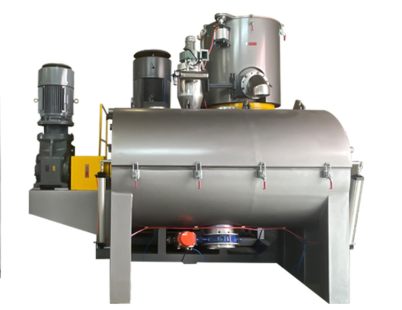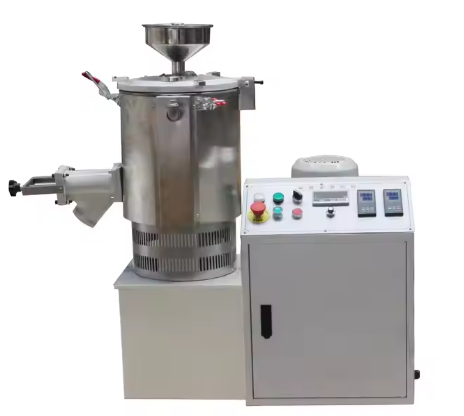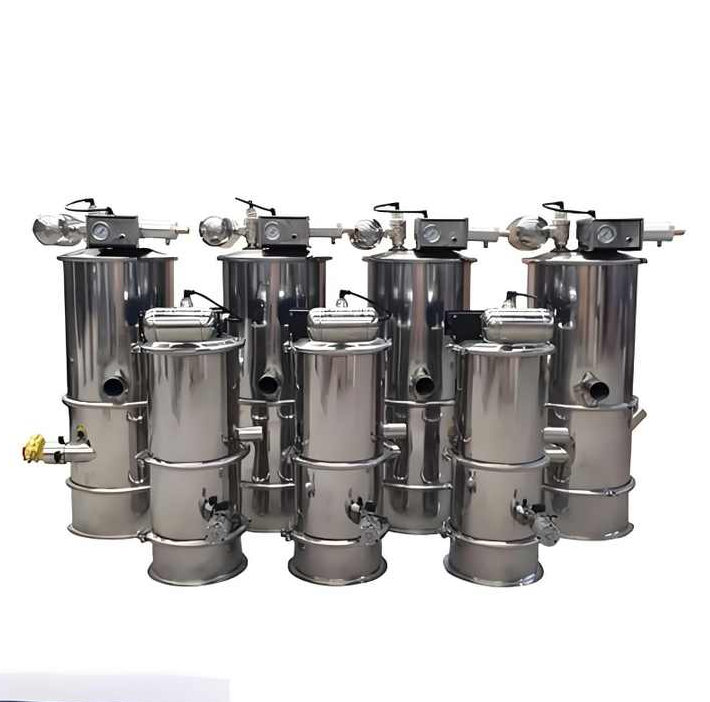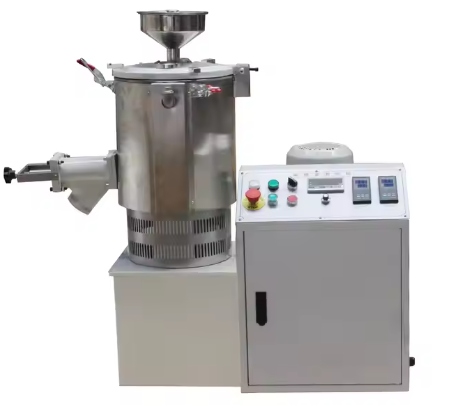
Plastic High Speed Mixer
Used for rapid and uniform mixing, stirring, drying and other processes of powdered and granular plastic raw materials and their additives
Volume: 100L/200L/300L/500L, etc.
Stirring speed: 0~1000rpm (adjustable)
Power: 15kW~75kW
High mixing efficiency: can complete a mixing within 5~10 minutes
High mixing uniformity: can reach more than 98%
What is a plastic high speed mixer?
Plastic high speed mixer is a powerful equipment specially designed for the plastic processing industry. Its core function is to efficiently and evenly mix powdered or granular plastic raw materials and various additives. In view of the characteristics of plastics such as thermosensitivity, viscoelasticity and melting behavior, the high speed mixer generates strong shear force, impact force and friction force in the closed mixing chamber through its unique high speed rotating stirring paddle. This violent mechanical action enables the material particles and the material and additives to be quickly and thoroughly dispersed and mixed.
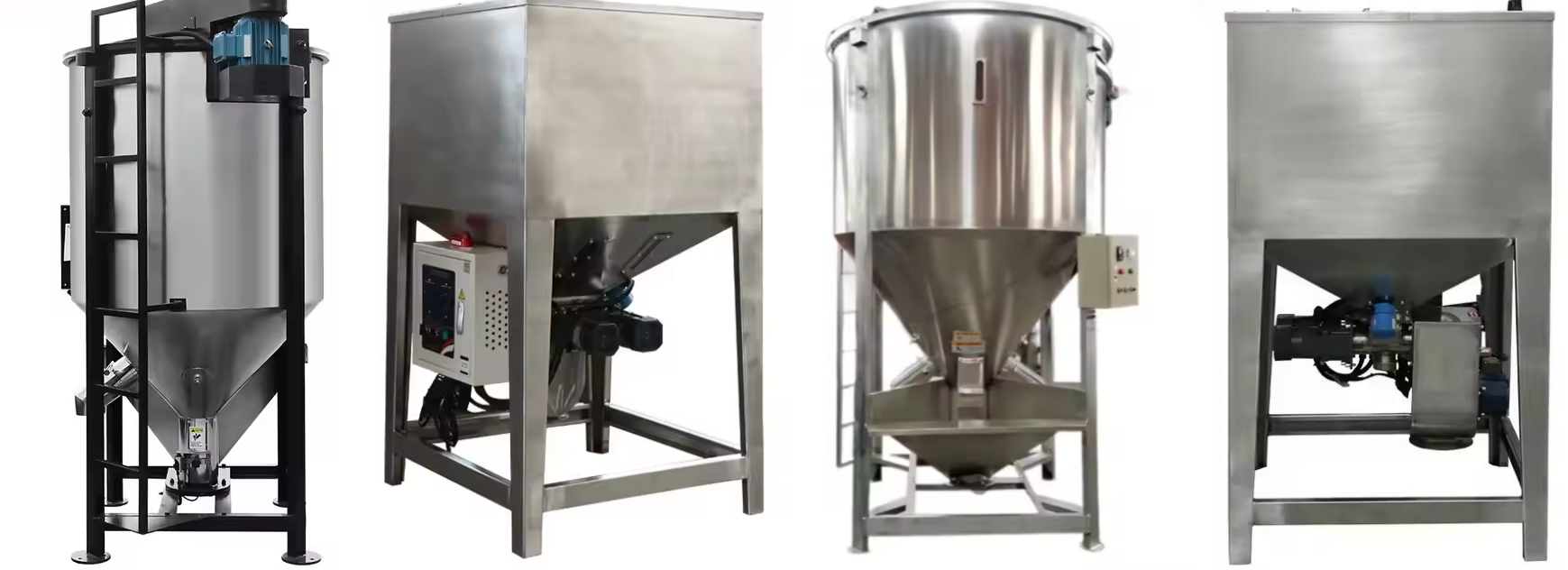
What are the two types of plastic high speed mixers?
Plastic high speed mixers can be divided into many types according to different classification standards. From the perspective of the main differences in structure and working principle, the two most common types are horizontal plastic high speed mixers and vertical plastic high speed mixers
|
Comparison dimensions |
Horizontal plastic high speed mixer |
Vertical plastic high speed mixer |
|
picture |
|
|
|
Direction of mixing container |
Horizontal placement |
Vertical placement |
|
Mixing speed |
Medium and low speed (300-1500 rpm) |
High speed (1000-3000 rpm) |
|
Mixing efficiency |
Moderate, suitable for medium and low viscosity materials |
High, suitable for powdered materials that need to be heated |
|
Volume range |
Large (100L-2000L common) |
Small and medium-sized (10L-1000L common) |
|
Energy consumption |
Low |
High (high speed) |
|
Typical applications |
General plastic mixing, pre-granulation pre-mixing |
PVC high speed mixing, rapid plasticization and mixing of heat-sensitive materials |
Working principle of plastic high speed mixer

High-speed rotation and stirring: The motor directly drives the main shaft to rotate through the belt wheel and the reduction box, and the special-shaped rotating blades installed on the main shaft rotate accordingly. Under the action of centrifugal force, the material rises along the conical wall of the fixed mixing tank and is in a state of reverse motion, forming a swirl motion, so that materials of different densities are mixed evenly in a short time.
Structural composition of plastic high speed mixer
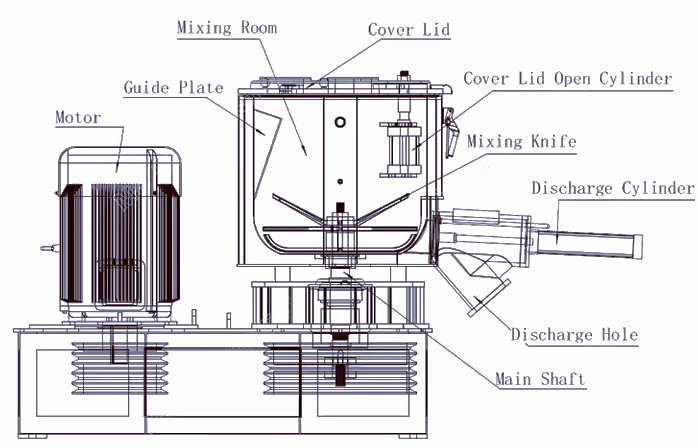
Mixing pot: multi-layer structure, divided into inner layer, outer layer and interlayer. The inner layer is welded with stainless steel, and the barrel wall and barrel bottom are made of stainless steel. The arc-shaped pot bottom has a smooth and hard inner surface, which is wear-resistant, corrosion-resistant and not easy to stick to the material.
Pot cover: generally made of cast aluminum, and the inner surface is fine-turned and polished. The exhaust port is equipped with a filter element device, and the feed port is equipped with a hopper and a discharge plug.
Transmission parts: The stirring paddle is made of stainless steel, specially machined, wear-resistant and corrosion-resistant. The main shaft is fine-turned, fine-ground, and tempered, and adopts three seals to prevent powder leakage.
Discharging device: Made of aluminum alloy, equipped with a pneumatic discharge door for automatic discharge. The cylinder is connected to the material door in one line, with reliable compression and good sealing performance.
Technical parameters of plastic high speed mixer
|
Model |
Total volume (L) |
Effective volume (L) |
Spindle speed (rpm) |
Motor power (kW) |
Output (kg/batch) |
|
SHR-50 |
50 |
35 |
650/1300 |
7.5 |
20–30 |
|
SHR-100 |
100 |
75 |
650/1300 |
11 |
50–70 |
|
SHR-200 |
200 |
150 |
650/1300 |
22 |
100–120 |
|
SHR-500 |
500 |
375 |
650/1300 |
55 |
250–300 |
|
SHR-1000 |
1000 |
750 |
650/1300 |
90 |
500–600 |
What are the advantages of plastic high speed mixer?
Plastic high speed mixer is a crucial pre-treatment equipment in the plastic processing industry. It is mainly used to quickly, evenly and efficiently mix, pre-plasticize and pre-wet various plastic resins (granules or powders) with plasticizers, stabilizers, lubricants, fillers (such as calcium carbonate), pigments (color powder or masterbatch), processing aids and other components.
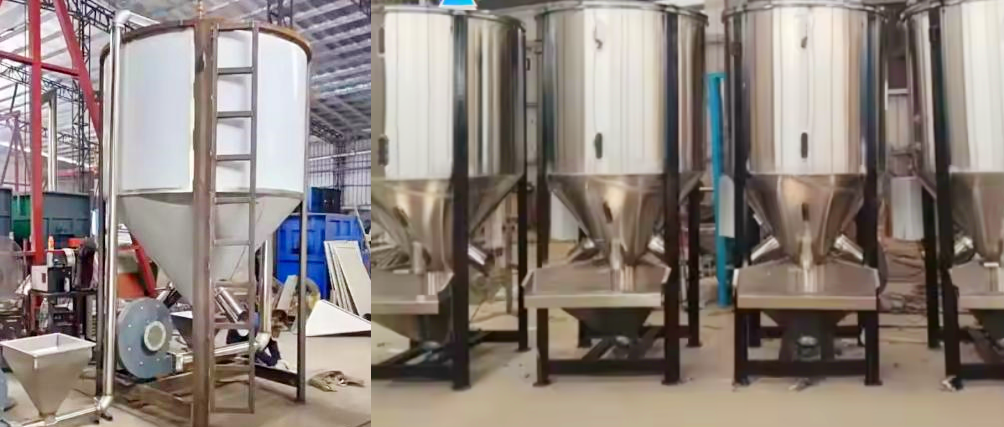
① Uniform mixing: Ensure that all additives are evenly dispersed in the resin matrix.
② Preheating and pre-plasticization: Use the heat generated by the friction between the high speed rotating blades and the material to soften the resin, and the liquid components such as plasticizers initially penetrate into the resin particles to prepare for subsequent extrusion, granulation or calendering processes.
③ Improve production efficiency: significantly shorten the mixing time (usually a few minutes to more than ten minutes), which is much more efficient than low-speed mixing.
④ Improve product quality: Uniform mixing is the key prerequisite to ensure that the final plastic products have consistent color, stable performance, and no defects (such as white spots, color difference, precipitation).
What can high speed mixers be used for in the plastic field?
High-speed mixers play a vital role in the field of plastics and are widely used in the preparatory stage of plastic product production.
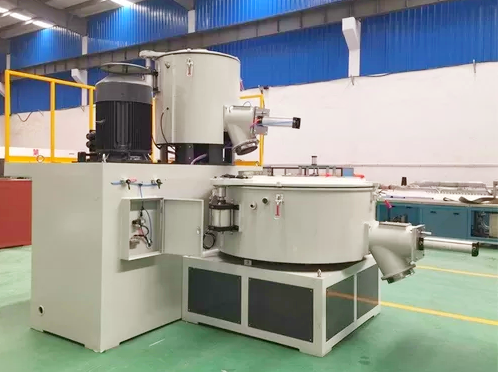
Its main function is to efficiently and evenly mix plastic raw materials (such as PVC, ABS, PP, PE, etc.) with various additives (such as stabilizers, plasticizers, fillers, pigments, etc.).
For example, in the production of PVC profiles, high speed mixers can ensure that all ingredients are evenly distributed, thereby ensuring the quality consistency of the final product.
In addition, in the process of plastic modification, it can fully combine the base resin with reinforcing materials (such as glass fiber), impact modifiers, etc. to improve the performance of the material. For the manufacture of masterbatches, high speed mixers can accurately disperse pigments in carrier resins to achieve ideal coloring effects. At the same time, in the compounding process of engineering plastics, it can be used to pre-mix raw materials and additives in different proportions to meet specific application requirements.
How is the working efficiency of plastic high speed mixers?
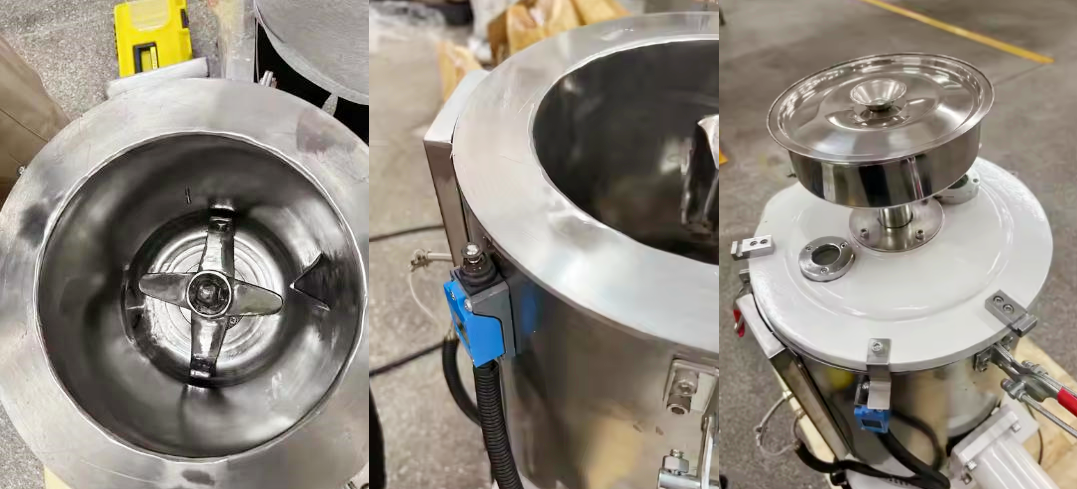
The working efficiency of plastic high speed mixers is mainly reflected in mixing speed, uniformity, energy consumption ratio, etc., and its efficiency is affected by multiple factors such as equipment type, structural design, material characteristics and process parameters.
The mixing time of a vertical high speed mixer is usually 5-15 minutes, and the mixing time of a horizontal mixer is mostly 10-30 minutes.
The vertical mixer has a high speed (1000-3000 rpm) and high mixing efficiency, but it consumes a lot of energy and is suitable for powdery materials that need to be heated (such as PVC). The horizontal mixer has a medium-low speed (300-1500 rpm) and a long mixing time, but is suitable for large-volume, low-viscosity materials (such as PE granulation premixing).
What is the general price of a plastic high speed mixer?
The price of a plastic high speed mixer varies depending on many factors. Here are some common price ranges:

Small plastic high speed mixer: The price is generally around $1,000 to $5,000. For example, a 10L high speed mixer for a laboratory costs about $1,800 to $4,800.
Medium-sized plastic high speed mixer: The price is usually between $5,000 and $15,000. For example, some models suitable for small-scale production may cost around $8,000 to $11,000.
Large plastic high speed mixer: Large equipment is more expensive, generally above $15,000, and can even reach $60,000 or more. For example, some large plastic high speed mixers with high production and high degree of automation may cost between $30,000 and $60,000.
